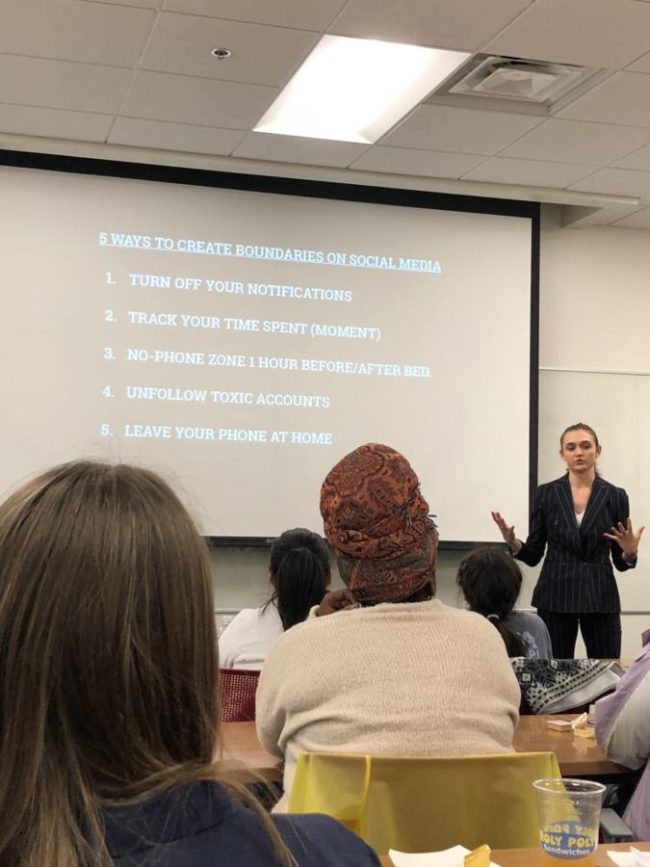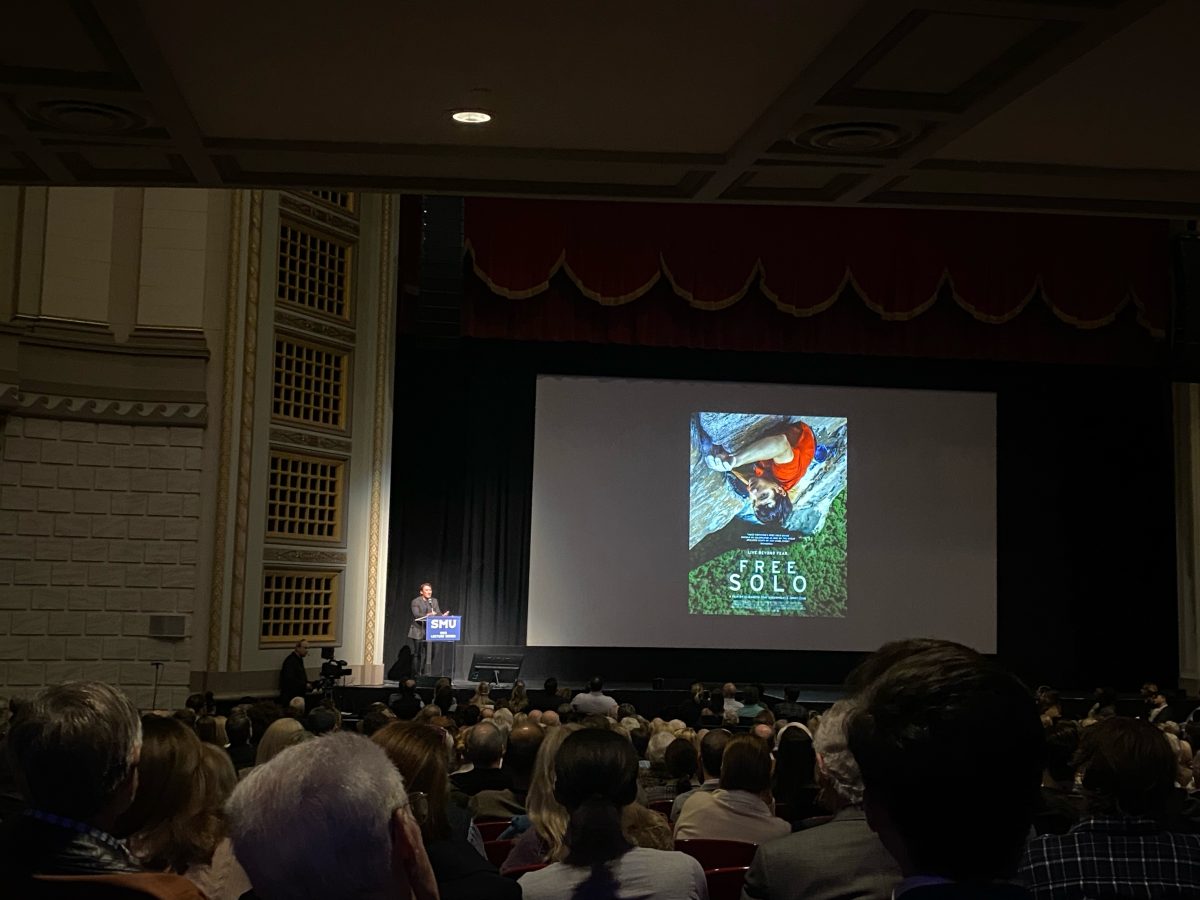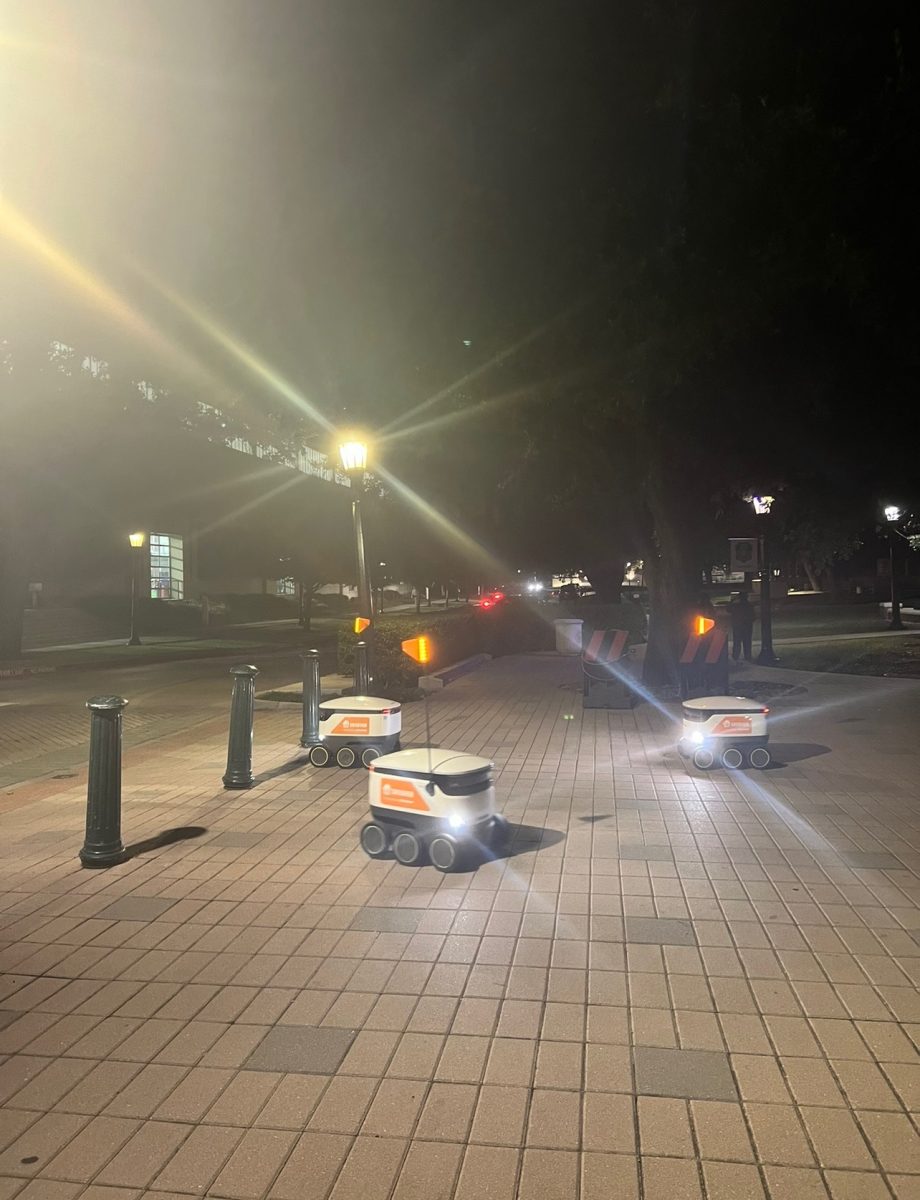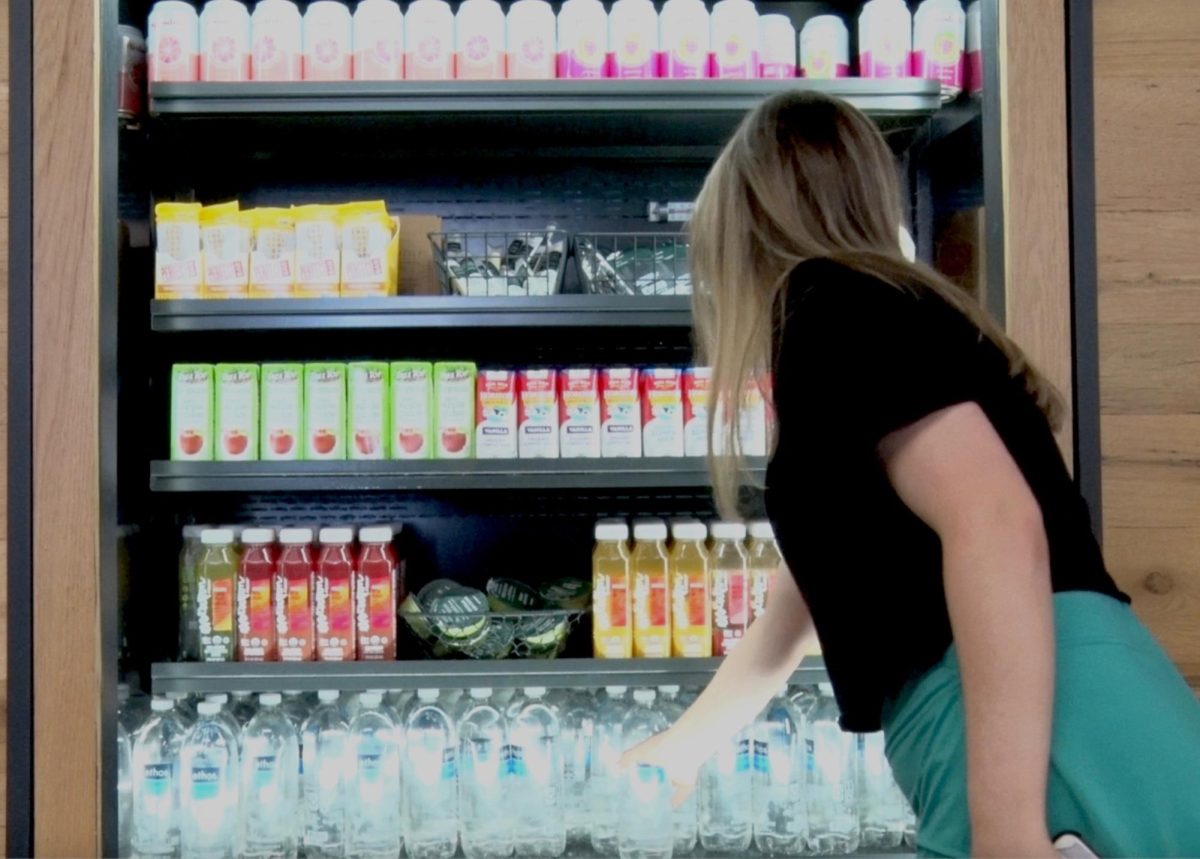On average, 60 percent of college students say they are addicted to social media.
There are numbers to prove it.
The average college woman spends ten hours a day on social media, and the average college man is not far behind, spending around eight hours a day on social media.
The SMU Health Center has a new department as of the 2018 school year focused on bringing health and wellness resources to campus through their campaign, Find Your Balance.
Larissa May, the founder of #Halfthestory, was on campus as the first speaker of the Find Your Balance campaign.
She spoke about social media and the effect it can have on the mental health of college students.
“Social media addiction is a reality,” May said. “And it’s up to us every day to take these small steps to help eliminate it.”
Some of May’s tips for limiting social media include leaving cell phones behind, setting time limits on apps and monitoring how certain posts make you feel.
“So much of our day is spent on social media. It is so important to stop and have these conversations to help reduce depression and anxiety, and take these first steps,” May said.
Along with social media usage, rates of anxiety, depression, and suicide have also increased on college campuses.
“Looking on social media and seeing what I’m missing has led to me having these more depressive episodes,” said Matthew Geiger, a sophomore student. “Due to the fact that I start to compare myself to the students that are having those experiences…that I’m not good enough.”
The Find Your Balance campaign focuses on bringing health and wellness to campus in order to improve student balance and well-being.
“A lot of times you don’t think it is a health-related issue, but it can be,” Griffin Sharp, Assistant Director of Health Promotion said. “We want all students to be balanced and graduate on time and succeed because success breeds success.”
For most, the talk was successful because they learned that other students were feeling the same way and learned tips on how to take a stand on social media.
“For someone to say that this is a problem all over the country and world, it really helps to know I’m not the only one,” Geiger said.
Although May was only on campus for one day, the conversation continues through an SMU student’s personal blog and website, I Want the Real.
SMU Senior, Dana Giles, started a blog to help students reveal parts of themselves they would not normally share on social media.
“What Larz [Larissa May] was talking about is that we have this double identity, what we are actually feeling and going through, and what we show the world,” Giles said. “I think we have a common purpose in trying to destroy this false image of perfection.”
May’s organization, #Halfthestory, shares stories from teens and young adults all over the world who are going through difficult times and are brave enough to share their experience on social media.
“I think we are headed in the right direction,” May said. “I think what Dana is doing is incredibly powerful, people taking their own leadership within their communities is important because it is easier to drive change.”
The Office of Health Promotion encourages students to use their resources to learn more about these issues and to help students who are suffering from them.
Through speakers associated with the Find Your Balance campaign and the heartfelt stories on I Want the Real, SMU students can begin to find hope in how the community can positively impact mental health.















